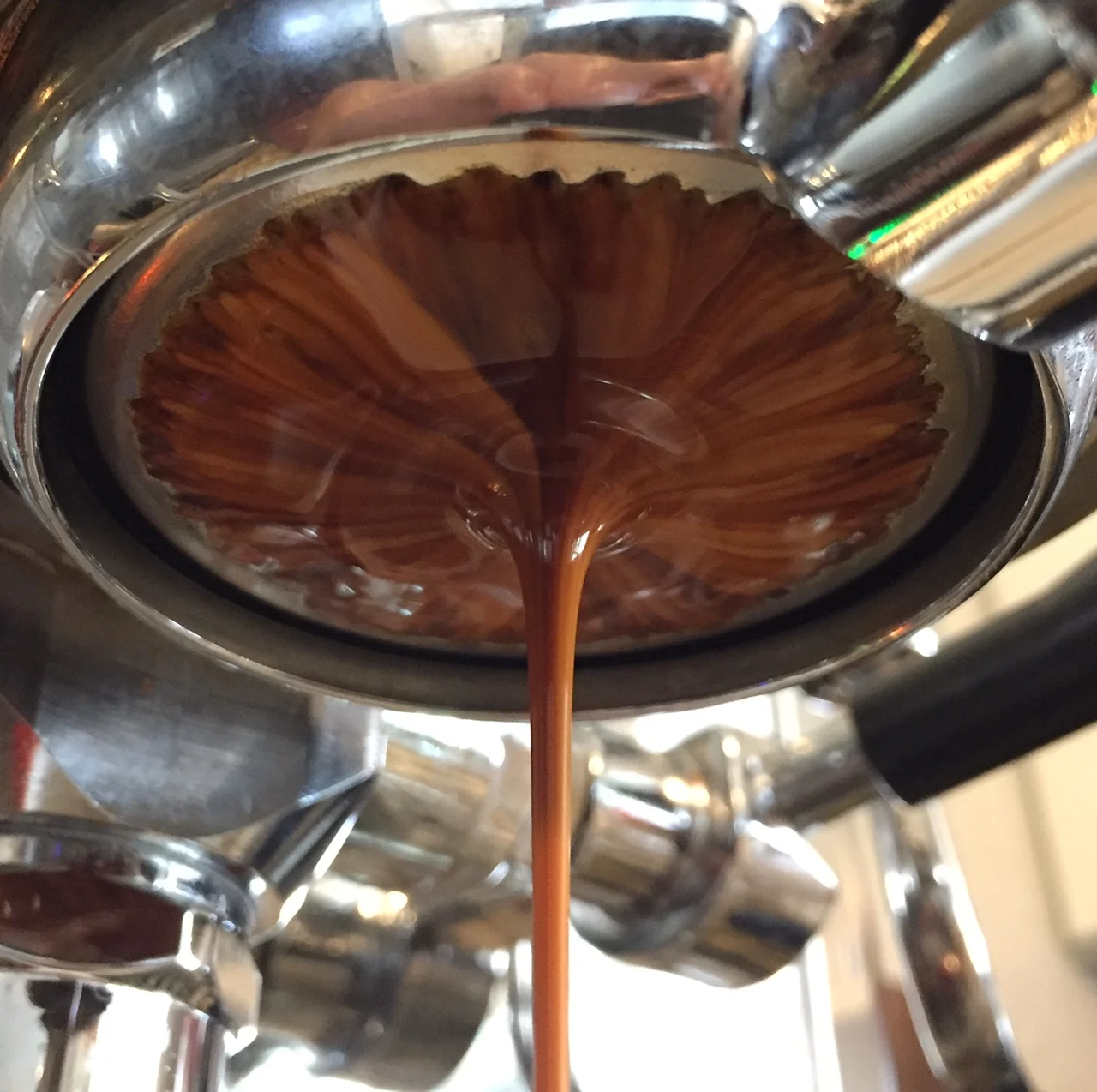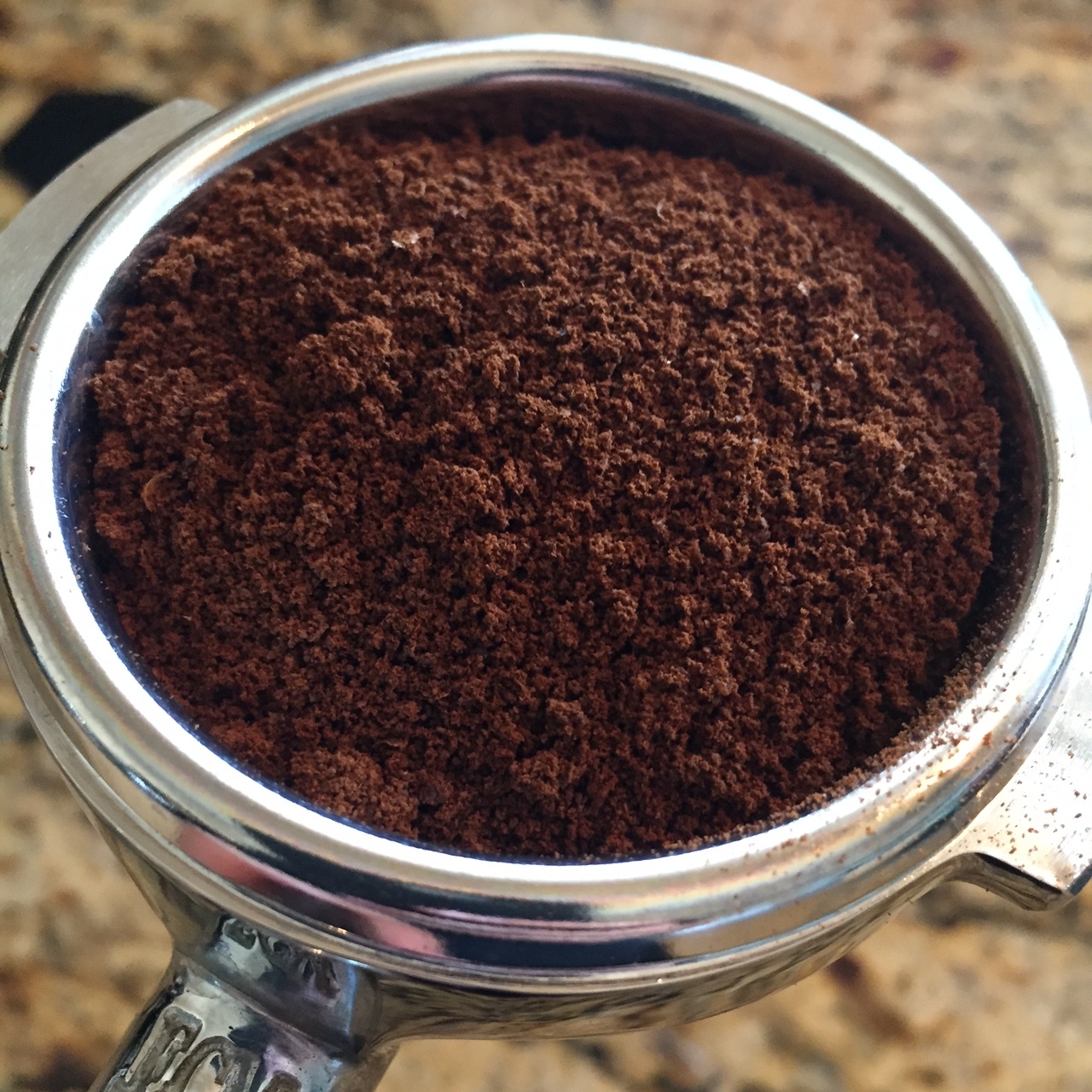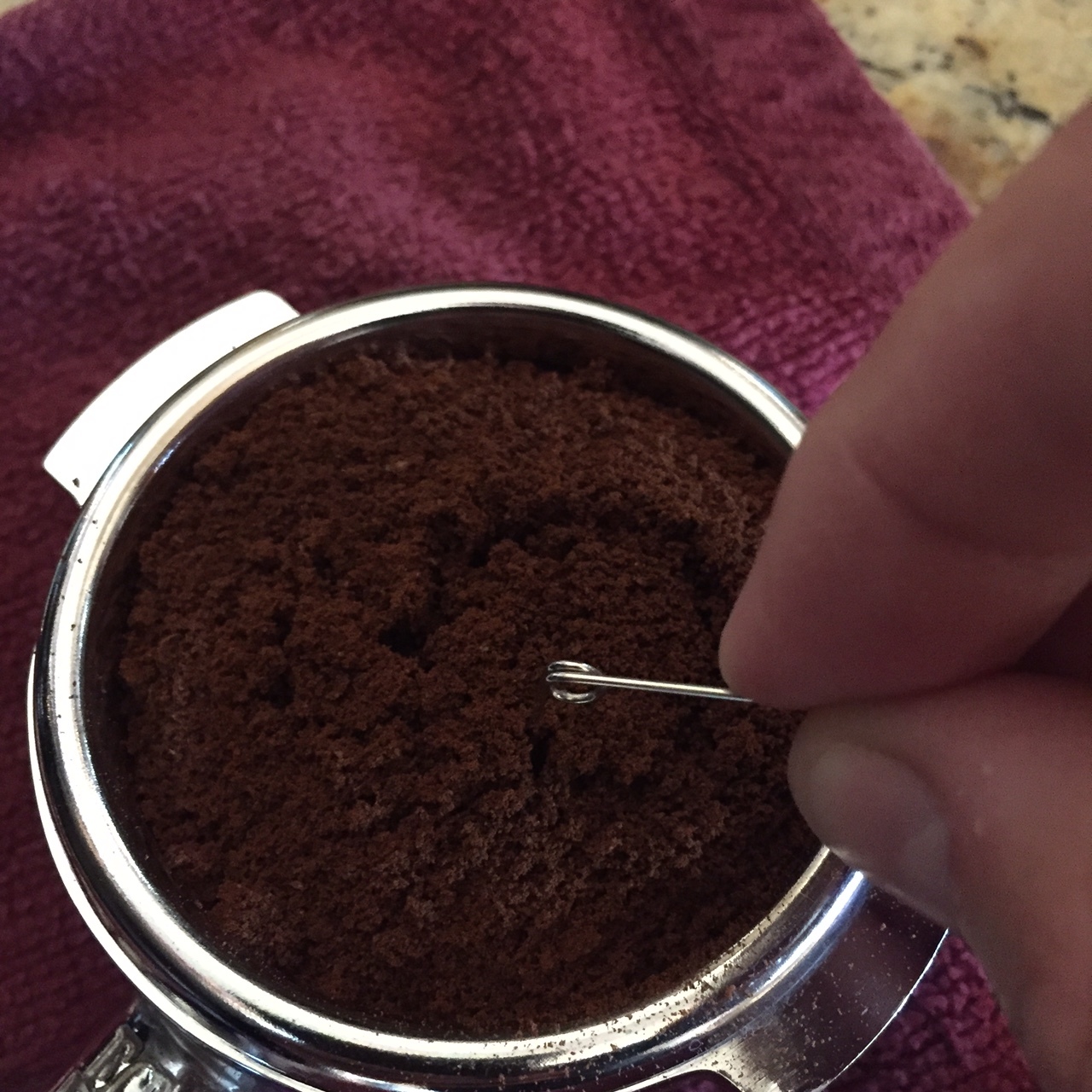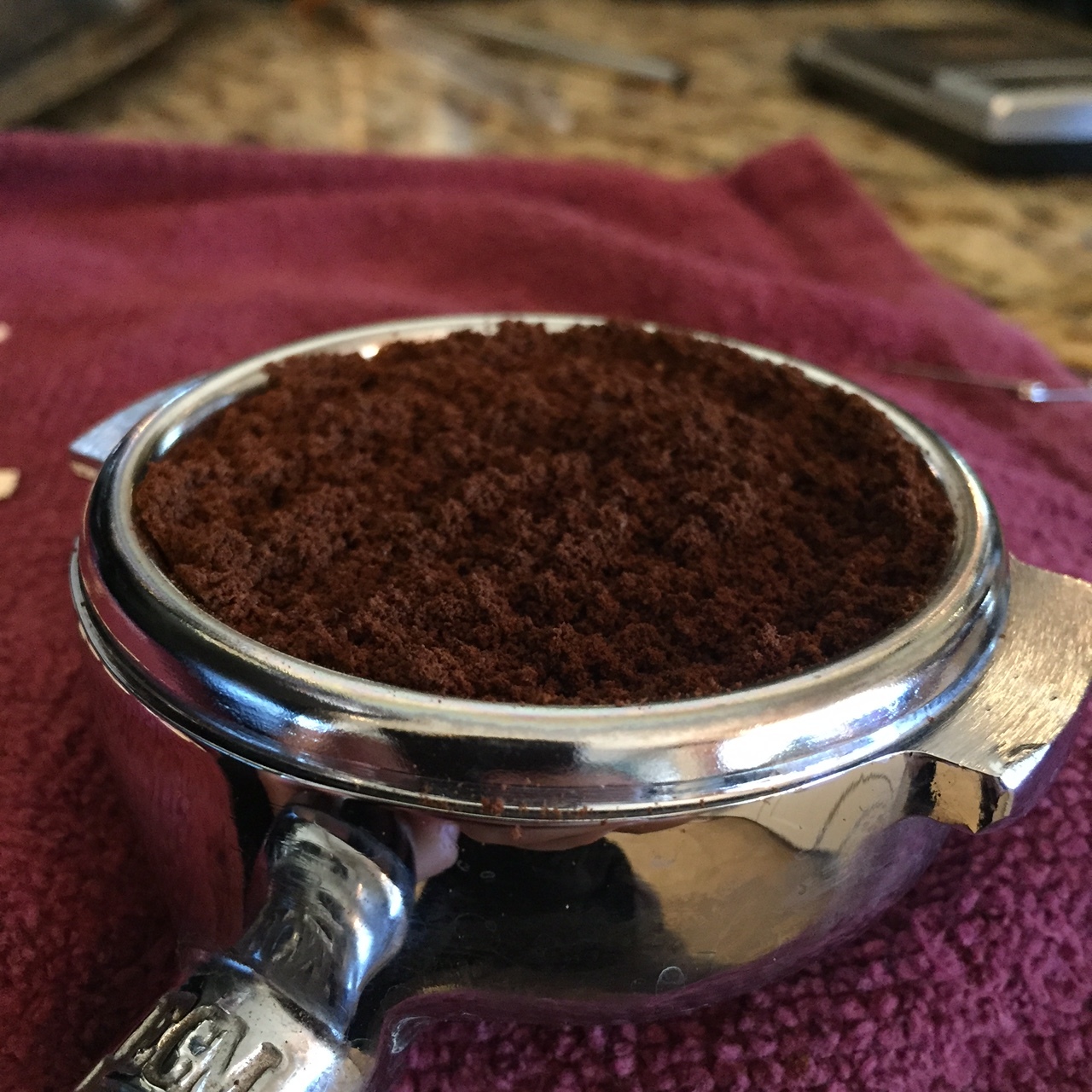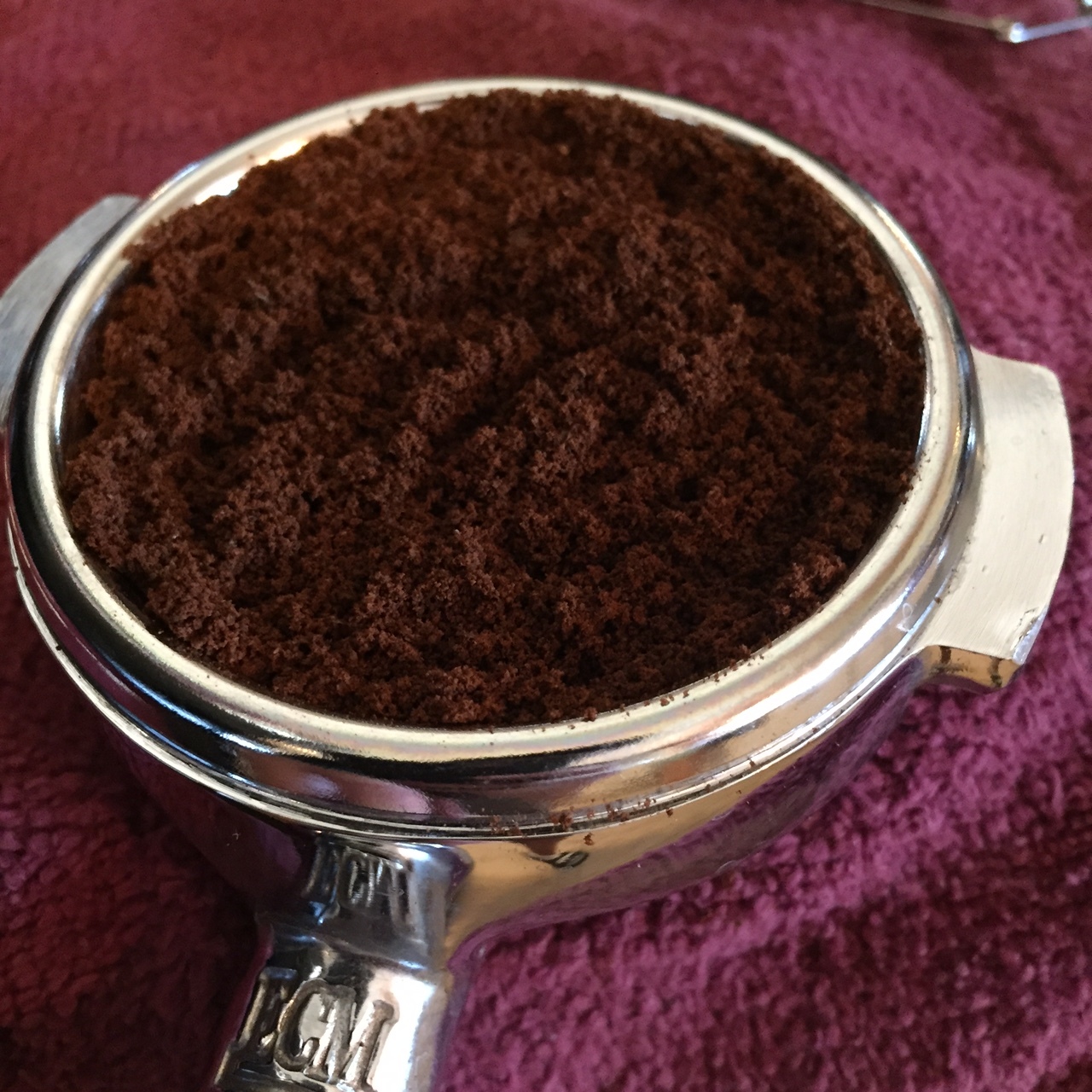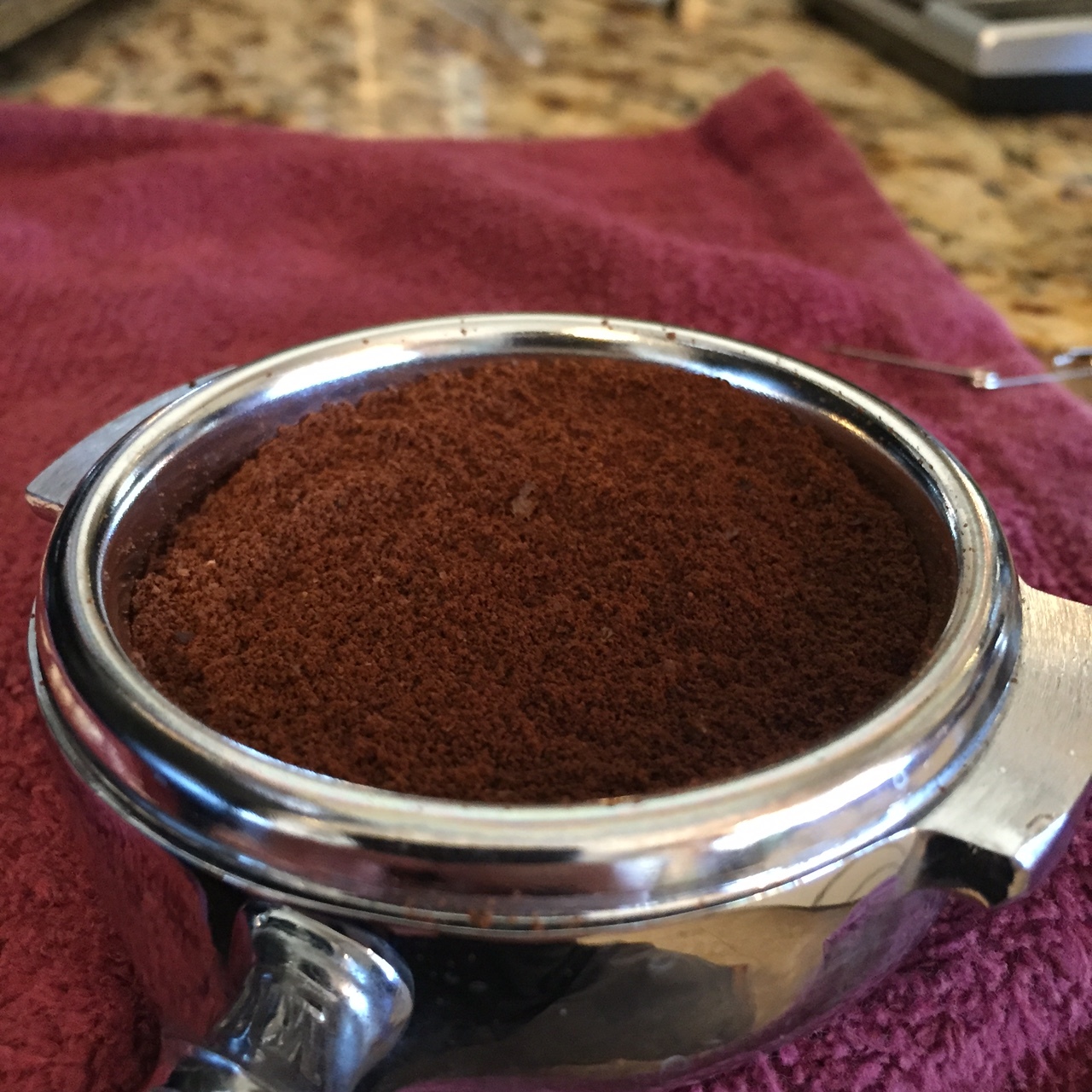First published in May of 2017, this guide is one of the most visited and shared. This update as of July 2020, provides a few contextual clarifications.
The key to tasty coffee, in general, is even extractions. Making sure there isn't some coffee that is being over extracted, causing bitter flavors, and some that is being under extracted, causing acidic flavors. This is all the more important in espresso, where everything from water contact time to beverage size is concentrated down, exaggerating any unevenness. The unfortunate truth of making espresso at home is that you really do get what you pay for when it comes to equipment, and there is a high barrier to entry, where entry-level equipment may not be as forgiving, and even high-end commercial equipment may not be as home volume friendly. WDT, or the Weiss Distribution Technique, can help compensate for those shortcomings by evenly distributing coffee in the portafilter to promote more even extractions and better espresso.
The biggest update to this post is that I personally don’t use WDT anymore since my grinder does not require it. When originally writing this, I was resigned to the fact that it was simply a necessary step in the process to promote even extractions. However, my current perspective is that WDT is a tool to overcome or compensate for a grinder that isn’t capable of even distribution, either straight into the portafilter or transferred to the portafilter. In practice, particularly in the commercial environment, most of the doserless grinders of today will dose pretty evenly in the basket such that they can get “pretty good” extractions, quickly and consistently to serve the customer. However, in the home environment, particularly with the home-oriented and single dosing grinders, dosing funnels, WDT, leveling and grooming tools have become the norm since those grinders simply do not dose evenly enough without those steps. This is not a bash against those grinders by any means, I love seeing so many great home-oriented and single dosing grinders available, but rather an acknowledgement that is often overlooked - that WDT is a necessary evil of working with a grinder that does not dose evenly. It is NOT required for espresso, but rather a tool to compensate and correct for the dosing habits of these grinders.
My original thought for this post was to break down what WDT is, what it does, and who should use it, but this post on Home-Barista.com by John Weiss, the man credited with developing WDT, spells out all of that extremely well. I highly recommend anyone interested in this topic give it a read. Now, assuming you just took the time to read it, let's talk about the practical applications in the home environment.
When I first wrote this post I was using a Compak K10PB modified for single dosing and would often go back and forth on using WDT. The doser of the K10PB was actually pretty good for most coffees with just some side taps. And, although I fully acknowledged its merits, I would try and pull shots without it, so I didn't have to add an extra step to the prep. However, when trying to eliminate variables while working with lightly roasted single origin coffees and precision baskets, like those from VST and IMS, technique becomes more demanding, as both are less forgiving. And even distribution is key to creating even extractions, and those picturesque #espressoporn shots. This quote from the linked post on Home-Barista.com drives this home best:
The WDT puts the focus on distribution, a critically important and oft-neglected part of espresso technique. Call it a crutch, call it a cheat, call it whatever you will, but I have not found anything else that approaches the consistency and flexibility of this approach.
So, being that I enjoy lightly roasted, single origin coffees, I did use WDT about 50% of the time or more when I was using the Baratza Vario and Compak K10 PB. I have not used a funnel, and have simply used a (clean) safety pin, with the sharp end bent 90* to the body. A dissecting needle or even specific WDT tools certainly work well, but if you're wanting to try this at home, a paperclip bent in a similar manner or anything else that is thin should work. I started using the safety pin and just kind of stuck with it because I can hold the rounded tab end.
I just use a simple safety pin and hold the tab at the end.
As the article states, you just want to make overlapping circles evenly throughout the basket, making sure to hit all areas. This will help to break up any clumping, fluff up the grinds, and make the distribution of the grounds more even throughout. Unless your grinder produces really clumpy grinds, my general rule of thumb is less is more. I typically find the more I stir and try and manipulate (play with) the coffee, the more uneven it ultimately is. (There are also some schools of thought that feel any additional time spent messing with the coffee after it’s been ground is just allowing it to stale and losing volatile aromatics.) From here, a couple of vertical taps of the portafilter against the counter to settle the grounds is all that is needed to collapse any air pockets and prepare for tamping.
One thing that is not often mentioned when using WDT is that shots tend to run or flow faster than if you didn't use it. I attribute this to the fluffing up of the grounds, so they are more uniformly layered versus heavily compacted. I mention this because, in my personal experience, I find that if you are dialing in a coffee, it's best to use it every time or not at all, since going back and forth will effect shot times and yields, and may necessitate a different grind setting.
So, what's the point? Especially for those new to espresso, incorporating WDT into your workflow will help eliminate one of the numerous variables in making espresso, if you grinder requires it. It will speed up the dial in process by mitigating bad prep or poorly extracted shots due to bad distribution being the culprit, and aid in making consumer and commercial equipment more friendly and forgiving. Combined with a naked or bottomless portafilter, one can really hone their skills and improve the consistency and repeat-ability of their prep technique to focus on the coffee and how to make it as delicious as possible. It's an often overlooked tool or "cheat" if you will, with underrated benefits. To those new to the espresso process or struggling with demanding coffees or equipment, give WDT a try. And if you have any questions or comments, please feel free to contact me or leave them below. Thanks for reading.
